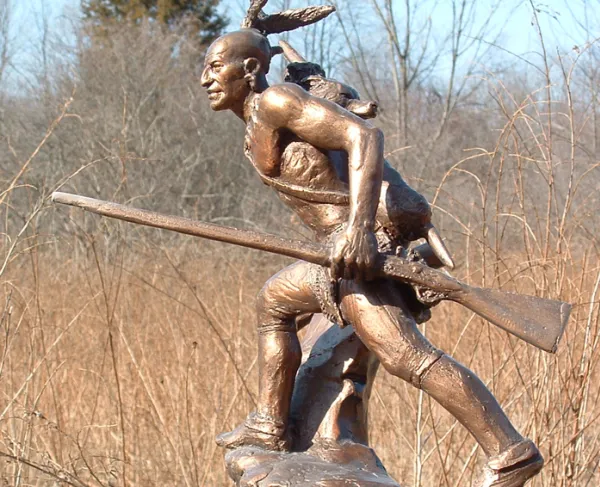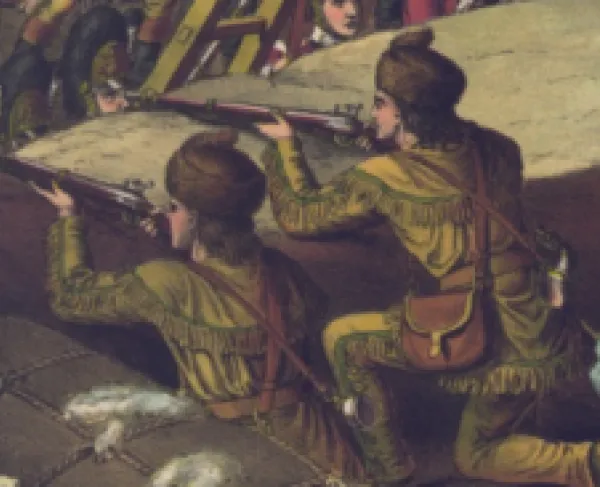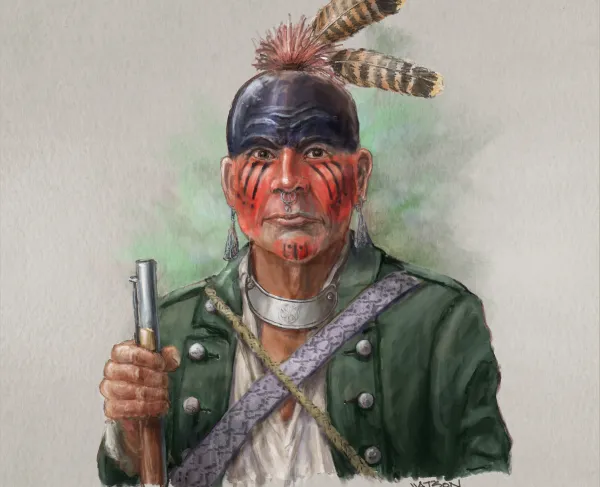Daniel Nimham

Born in approximately 1726, Daniel Nimham grew to stand as a protector of his fellow Wappinger — or Stockbridge — Indians in the Hudson River Valley as their last sachem. A master of adapting, Nimham had encountered settlers of the valley as a young man, kept friendly relations with them, and likely learned English from those very settlers. However, a land grab gone awry left a bitter taste in the mouths of the Wappinger, as a sizeable portion of their land was taken out from under them when about 300 Wappinger men had been serving with the British during the French and Indian War.
This unjust occurrence fueled Nimham to contest the validity of the action, and give his account of the audacious expansion claimed by the Philipse family, who functioned as the Wappinger’s landlords. It was petitioned before the King and eventually brought before the New York Common Council in 1765. Yet, with a questionable deed presented by the defendant and hesitance to set an adverse precedent, the Council ruled against Nimham and the Wappinger. But the Wappinger’s battle was not over.
Upon the outbreak of the Revolution, Nimham came to see the value of the Patriot cause and the potential to negotiate the return of Wappinger land if he was to fight alongside the colonists. Eventually, Nimham was given a commission as a captain in the Continental Army and became a recruiting force working to bring Indian communities in Canada and the Ohio Valley to fight for the plight of the Patriots. His son, Abraham, was placed in command of the Stockbridge Indian Company, based out of Stockbridge, Massachusetts. Hessian officer Johann Van Ewald of the Jager Corps stated that the Stockbridges’ typical uniform and accoutrements included hats of bast, body length shirts of coarse linen, long linen trousers down to their feet and deerskin shoes, with a “musket, a quiver of about twenty arrows and a short battle axe [tomahawk].”
They were sent to the Hudson Valley’s White Plains, N.Y., in the summer of 1778 to serve under General Charles Scott. While New York City remained in British hands, White Plains was a port city that was viewed as essential in maintaining northern war efforts. But in terms of the land surrounding today’s Yonkers, N.Y., and south to the Bronx border, there existed a dangerous stretch of land claimed by neither side. With this placement, the 60-man Stockbridge Company was given the task of patrolling land on the northern border of New York City and gathering intelligence on enemy movement.
It was during this time that the Battle of Kingsbridge, otherwise known as the Stockbridge Indian Massacre, unfolded — on August 31, 1778, to be exact. Having set a trap on Cortlandt’s Ridge on the Bronx side of the border with Westchester County, the British collided with Daniel Nimham and the Stockbridge Company when Lieutenant Colonel John Graves Simcoe’s infantry struck and hit their left flank. Besieged and outnumbered by the British, the Stockbridge engaged in hand-to-hand combat. According to a journal entry from Simcoe, Daniel Nimham proclaimed to his force that “he was old and would stand and die there.” The supposed words turned out to be foretelling, as the sachem of the Wappinger was slain by British cavalryman Private Edward Wight in battle that day.
In what remained of the battle, the ruthless Banastre Tarleton’s light cavalry entered and ensured total victory through appalling practices. Estimates of the dead vary from 17-40, three Stockbridge warrior-soldiers were captured, and a determined few escaped over Tibbetts Brook.
After the war, General Washington wrote that the Stockbridge “remained firmly attached to us and have fought and bled by our side; that we consider them as friends and brothers.” But despite this claim, their service did little to improve conditions following the war. With many Stockbridge men lost, growth was difficult. The survivors and families of those killed were excluded from the bounty-lands offered to white Patriots. Extreme land pressures continued, which led to their seeking refuge in central New York’s Oneida Country, and then — with the construction of the Erie Canal — their migration to Michigan Territory, that of which makes up current-day Wisconsin.
Now, the Stockbridge-Munsee Band of Mohican Indians are a federally recognized American Indian nation, based in Bowler, Wis. But a longstanding powwow continues in their Hudson Valley homeland, and is dedicated to the Wappinger’s great sachem Daniel Nimham. He is also honored with a memorial and historical marker in the Bronx’s Van Cortlandt Park, which contains the battlefield site on which he fought and laid down his life in the Battle of Kingsbridge.





